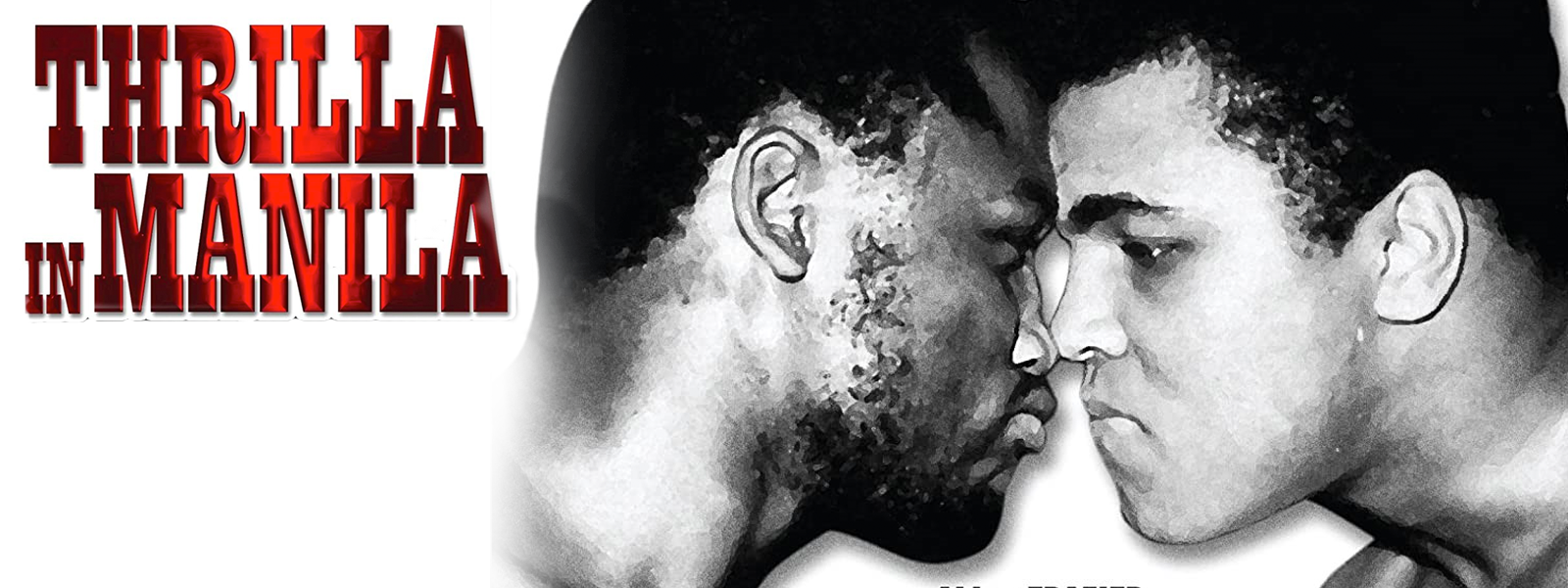Starring: Muhammad Ali, Joe Frazier, Thomas Hauser and Ferdie Pacheco
Rated: Not Rated Documentary/Sport
Following the success of the “Rumble in the Jungle” match held in Kinshasa, Zaire in 1974, on October 1, 1975, Muhammad Ali and Joe Frazier would meet for the third and final time. Their intense rivalry is played out in Araneta Coliseum in Quezon City of the National Capital Region, Philippines.
Building off the catchy title of Ali’s previous match in Africa, this fight was termed the “Thrilla in Manila”. This documentary poignantly captures the pride, betrayal, anger, bitterness and comradery between the two African-American men who contributed much, perhaps too much, to the sport of boxing and American culture.
Using original images and archival interviews, Thrilla in Manila discloses the events and the human factors of both Ali and Frazier that lead to the match. Their first match, billed as Fight of the Century, took place on March 8, 1971 in Madison Square Garden in New York City, New York. Joe Frazier was declared the champion by unanimous decision. Although the previously-undefeated Muhammad Ali endured for 15 rounds, he was given a knockdown by Frazier at the beginning of the final round.
On January 28, 1974, Frazier and Ali engaged each other for a second time, in a non-title boxing match, called Super Fight II. Frazier had lost his title as “Heavyweight Champion” to George Foreman, who defeated Frazier in a second-round knockout. Ali, who had two split bouts with Ken Norton, wanted to avenge his loss to Frazier and regain the title from Foreman. Also held at Madison Square Garden, Ali won the 12-round Super Fight II by a unanimous decision. However, there was controversy surrounding the decision because of questionable actions, including the illegal holding of and pulling down on Frazier by Ali, not called by referee Tony Perez.
Similar to Mobutu, Ferdinand Marcos, president of the Philippines, wanted to improve the international impression of his country. Hosting this match, three years after martial law had been removed, would prove to be socially enhancing and economically lucrative. However, there would be professional and personal issues plaguing this third match between Muhammad Ali and Joe Frazier. These issues range from adultery to training conditions for the boxers. However, what would prove to be most controversial was Ali’s betrayal of Frazier, who supported Ali in a myriad of ways when he was banned from boxing for his refusal to be inducted into the U.S. Army. Ali’s cruel comments, based in accusatory rhetoric, ugly racial degradation and negative stereotypes, hyped others to view Frazier as a “ignorant”, “ugly”, “Uncle Tom” and “sell-out” to Black people and their advancement. He even carried a gorilla doll, scathingly referencing it as Frazier, that he pummeled. His intra-racist, personal attacks were reprehensible, and Ali’s supporters even sent death threats to Frazier and his family.
The Thrilla in Manila documentary being created by HBO is most appropriate, as it was the first television network in history to broadcast linking satellites with cable, hence, transitioning cable television into a program provider. The first program HBO broadcasted was the Thrilla in Manila fight on September 30, 1975.
Also, history-making was that this third boxing match between Muhammad Ali and Joe Frazier was the first match to be made available, transmitted by HBO, on pay-per-view cable television,
Another first is a multi-level, commercial area in the Araneta Center named “Ali Mall” in honor of Muhammad. It is located near the coliseum where the Thrilla in Manila was held.
Both the mall and the coliseum still hold places of great significance for those who visit. The former is the first shopping mall in the country and the latter, called the Smart Araneta Coliseum, is one of the largest indoor arenas in Asia and one of the largest clear span domes in the world.

